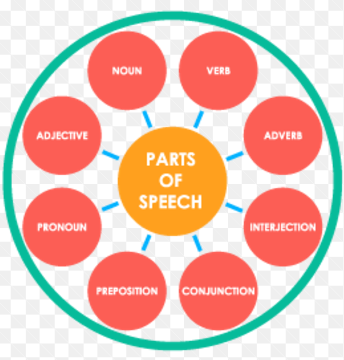What Are the Parts of Speech in English Grammar: A Beginner's Guide
What Are the Parts of Speech in English Grammar?
In English, there are eight parts of speech that classify words based on their function. Let’s explore them in detail with examples and usage tips.

1. Nouns
Nouns are words that name people, places, things, or ideas. They often act as the subject or object in a sentence.
Examples: teacher, school, computer, happiness.
- Types of Nouns:
- Common Nouns: General names like car or city.
- Proper Nouns: Specific names like Toyota or Paris.
- Abstract Nouns: Intangible concepts like freedom or love.
- Collective Nouns: Groups like team or flock.
- Sentence Example: The teacher explained the concept clearly.
2. Pronouns
Pronouns replace nouns, helping to avoid repetition and improve sentence flow.
Examples: I, you, he, she, it, we, they.
- Types of Pronouns:
- Personal Pronouns: He went to the park.
- Possessive Pronouns: The book is mine.
- Reflexive Pronouns: She taught herself French.
- Sentence Example: They are going to the concert.
3. Verbs
Verbs express actions, events, or states of being. They are essential to sentence structure.
- Examples: run, jump, be, have, think
- Types of Verbs:
- Action Verbs: She runs every day.
- Linking Verbs: He is a doctor.
- Helping Verbs: They have been working all day.
- Sentence Example: The child laughed loudly.
4. Adjectives
Adjectives modify nouns or pronouns, providing more detail about their qualities.
- Examples: blue, tall, beautiful, interesting
- Usage Tip: Adjectives often answer what kind?, which one?, or how many?
- Sentence Example: The tall building towers over the city.
5. Adverbs
Adverbs modify verbs, adjectives, or other adverbs. They describe how, when, where, or to what extent an action occurs.
- Examples: quietly, today, extremely, often
- Common Confusion: Many adverbs end in -ly, but not all (e.g., fast and well).
- Sentence Example: She sang beautifully.
6. Prepositions
Prepositions connect nouns or pronouns to other words, showing relationships like direction, time, or location.
- Examples: on, at, by, under, with, before
- Usage Tip: Prepositions are often followed by a noun or pronoun, forming a prepositional phrase.
- Sentence Example: The keys are under the couch.
7. Conjunctions
Conjunctions join words, phrases, or clauses, making sentences more cohesive.
- Examples: and, but, or, because, although
- Types of Conjunctions:
- Coordinating Conjunctions: She bought apples and oranges.
- Subordinating Conjunctions: He stayed home because it was raining.
- Correlative Conjunctions: Neither the teacher nor the students were late.
- Sentence Example: I wanted to go, but I was too tired.
8. Interjections
Interjections express strong emotions or reactions, often standing alone in a sentence.
- Examples: Wow!, Oops!, Hey!, Hooray!
- Usage Tip: Interjections are informal and usually followed by an exclamation mark.
- Sentence Example: Oops! I dropped my coffee.
Why Are the Parts of Speech Important?
Understanding what are the parts of speech in English grammar equips you with the tools to construct clear and grammatically correct sentences. Here’s why they matter:
- Effective Communication: Knowing how words function improves both writing and speaking.
- Error Reduction: Identifying parts of speech helps spot grammar mistakes quickly.
- Language Learning: A strong foundation in grammar aids in learning new languages.
How to Master the Parts of Speech
- Practice Regularly: Analyze sentences to identify each word’s part of speech.
- Leverage Resources: Use grammar guides, apps, and quizzes to reinforce your knowledge.
- Engage in Writing: Apply what you’ve learned by writing sentences that use varied parts of speech.
- Seek Feedback: Share your work with teachers or peers to improve your skills.
Common Pitfalls to Avoid
- Misplacing Adverbs: Positioning adverbs incorrectly can confuse meaning. For example, She only eats vegetables is different from She eats only vegetables.
- Overloading Sentences: Using too many adjectives or adverbs can make sentences clunky.
- Ignoring Prepositions: Misusing or omitting prepositions often leads to awkward phrasing.
Understanding what are the parts of speech in English grammar is the first step toward mastering the language. These eight categories—nouns, pronouns, verbs, adjectives, adverbs, prepositions, conjunctions, and interjections—are the foundation of English grammar. By learning their roles and practicing regularly, you’ll become a more confident and effective communicator.
Start exploring the parts of speech in your everyday conversations and writing, and watch your language skills flourish!

